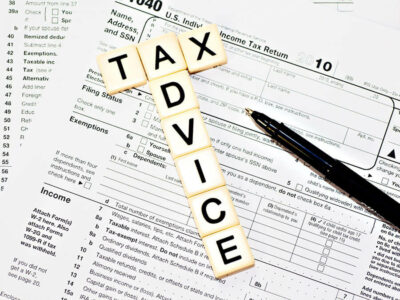
This means that if a company does not pay a dividend in a given year, that «missed» dividend is not directly made up for in a future period. Dividends are treated as year-to-year; any prior period does not carryover and does not hold weight into the order of who gets paid what. This type of stock is common in banking as there are international rules that dictate how certain capital is classified by regulators. Those holding common stock or preferred shares that are not cumulative simply miss out if a dividend payment is not made. Any arrears would not accumulate for the future in case of noncumulative preference shares (stock) and thus would not be https://wpplugins.devcmitexpert.com/production-costs-what-they-are-and-how-to-2/ able to claim it, thereby leading to no obligation on the issuing company.
Cumulative vs Non-Cumulative Preferred Stock: Difference and Comparisons

This problem may have raised due to the inability of the company to manage its working capital effectually which may further extend to going concern issues for the company and ultimately end up in bankruptcy. In this way the chances of payments of dividends and/or the original capital to the cumulative preferred stockholders will decrease or completely diminish. However, the non-cumulative preferred stocks usually stipulate that the business is running effectively and is totally capable to meeting all of its necessary cash commitments. This mitigates the risk of bad debt for the holders of non-cumulative preferred stocks and makes it a safe investment option for investors. Cumulative preferred stocks establish arrangements for the payment of missing dividends and ensure that all of the company’s dividends are paid to cumulative preferred shareholders. Priority is given to cumulative preferred stockholders, who are paid before other common stockholders.

LOAN AGAINST SHARES
- While the shares of ETFs are tradable on secondary markets, they may not readily trade in all market conditions and may trade at significant discounts in periods of market stress.
- Even if the dividend is not paid for whatever reason, such as a crisis or a downturn, it will be saved for a later period.
- The investor will be one of the first to receive his or her dividend once this happens, as the investor has preferred shares.
- Some preferred shares are convertible preferred stocks that include an option for the holder to convert the shares into a fixed number of common shares after a predetermined date.
- In this section, we’ll explore instances of companies issuing noncumulative preferred stocks and analyze their dividend trends to provide context for investors.
- It shows how many times a company’s earnings can cover its dividend payments, including both preferred and common stock distributions.
When preferred stock is issued initially, the dividend rate is based on current market interest rates. If you purchased a $100 par, 5% preferred stock, market interest rates were likely very close gym bookkeeping to 5%. If interest rates were to fall to 3%, the issuer would have a big incentive to refinance their preferred stock. If the issuer had one million shares outstanding (which is fairly average), they save $2 million every year. Unlike common stocks, however, preferred shares typically come with no voting rights.
- If the company or corporation is experiencing financial difficulties, the board of directors has the authority to omit, reduce, or even suspend dividends.
- You’re going to find more substantial capital reserves and fewer risky trading practices.
- The business in the 5th year was great, so the management declared a dividend to its shareholders.
- Since these shareholders do not have a right to claim any missed dividends, they may be reluctant to invest in this class of shares unless significant discounts are offered.
- Cumulative stockholders will see their dividends accrue, while non-cumulative stockholders will miss out on that year’s dividend.
- So, in a year where the company didn’t perform well, not only would you not receive dividends, but those missed dividends would not be made up in future years.
- The risk quotient between owning cumulative and non-cumulative preference shares also varies.
What Are Preference Shares?

Call features are not beneficial to stockholders, even with a call premium or call protection. Therefore, issuers must offer callable preferred stock with higher dividend rates in the primary market. Additionally, callable shares are in lower demand in the secondary market, resulting in lower prices and higher yields.

Preferred stocks, an often unexplored area of the stock market, offer an interesting opportunity for higher yields with less risk. It is important to note that the classification of dividends as cumulative or non-cumulative may vary depending on the legal framework of the jurisdiction in which a company operates. Different countries or states may have specific regulations regarding the treatment of dividends, and companies must comply with these regulations when determining the nature of their dividends. Preferred stock can have its place in a well-diversified portfolio, but investors should be aware of its downsides. This asset class is sensitive to interest rate fluctuations and offers limited upside potential but offers above-average payouts as a notable positive.
- Non-cumulative preference shares, on the other hand, do not allow payment for accumulated dividends.
- The information provided on the Site is not intended for distribution to, or use by, any person or entity in any jurisdiction or country where such distribution or use would be contrary to law or regulation.
- Preferred stockholders get guaranteed dividends whereas common stockholders only get dividends when the business has surplus cash.
- When the issuer’s business is highly profitable, they pay larger dividends to their participating preferred stockholders.
- Shareholders know that with non-cumulative dividends, their payments are not guaranteed.
- This is because the company is legally bound to pay these payments to preferred stockholders whenever company has enough cash.
Understanding Non-Cumulative Dividends
- The annual dividend can be calculated by multiplying the dividend rate by the par value.
- Cumulative preference shares are a type of share where dividends are accumulated and added to the share’s face value if they are not paid on time.
- Although it would look bad on the issuer and may have a long-term negative effect on their ability to sell other securities in the future, a company can’t share profits if they don’t have any.
- All missed dividends are accumulated and will be collected in the future when the company resumes payment.
- SSGA Intermediary Business offers a number of products and services designed specifically for various categories of investors.
A company cannot change the dividend rate set for cumulative preferred shares when issued. However, companies can suspend cumulative dividend payments for cumulative vs non cumulative preferred stock some time due to financial difficulties. Any suspended dividends will accumulate as dividends in arrears and should be paid before common shareholders receive dividends again. In contrast, holders of the cumulative preferred stock shares will receive all dividend payments in arrears before preferred stockholders receive a payment. Essentially, the common stockholders have to wait until all cumulative preferred dividends are paid up before they get any dividend payments again.
Leave a Reply